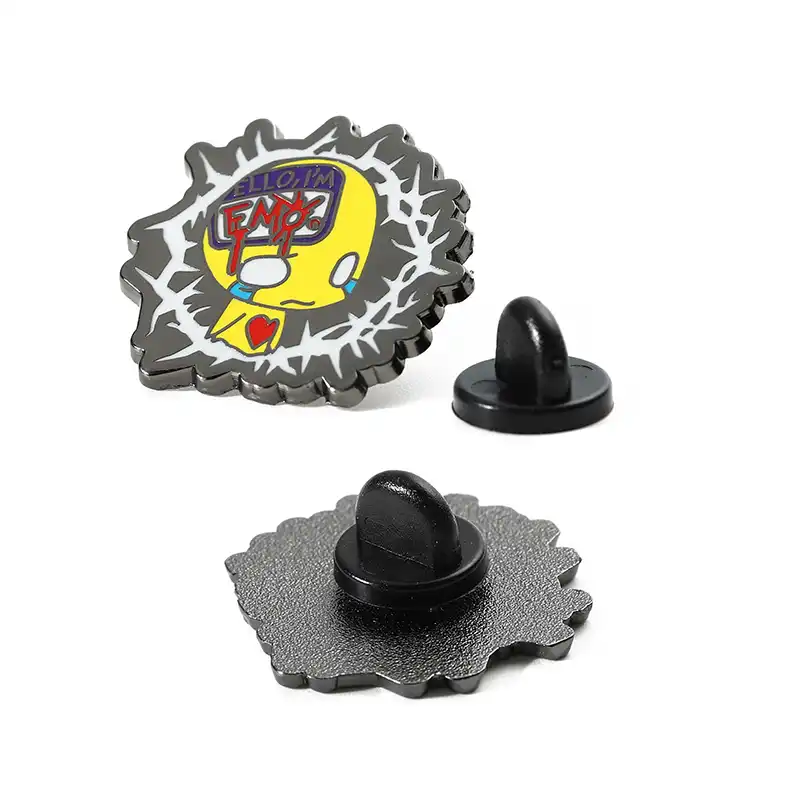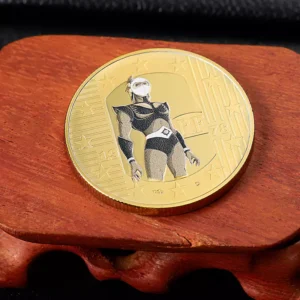Pins this little thing has long been reversed! From the previous can only be honest don’t clothes, to now become a hipster must-have fashion items, its transformation history can be wonderful! Whether it’s piles of pins from the wholesale market, couture name pins, or even those quirky customized ones, every little pin has its own story. Learn how they went from “practical” to “fashionable” and you might love them even more the next time you wear them! (Whispering, now even the celebrities can’t do without it to emphasize their street photography Oh ~)

The Early Beginnings of Pins
Who would have thought that the gadgets that fashionistas pin on their collars today were actually used as “buttons” thousands of years ago? Ancestors used simple pins made of bone, wood or even metal, purely for the purpose of fastening clothes. However, human beings love beauty is nature - to the Middle Ages, this thing is completely “roll” up, the aristocracy began to compete in whose family's pins more fancy, gold and silver with jewels, is the ancient version of the “identity certification”! (You don't say, at that time, depending on what kind of pins someone had, you could probably tell if he was doing well or not~)
The Rise of Decorative Pins in the 19th Century
The Industrial Revolution transformed pin manufacturing. Factories mass-produced wholesale button pins, making them accessible to the general public. People began wearing them not just for function but as fashion accessories. Political campaigns and social movements also adopted pins to spread messages, a trend that continues today.
From Function to Fashion
As pins became more affordable, their role expanded. No longer just for holding fabric together, they became symbols of identity and affiliation. Organizations used lapel badges for sale to denote membership, while individuals wore them as personal expressions.

The 20th Century: Pins as Cultural Symbols
The 1900s saw pins take on new meanings. During World War II, military lapel name badges helped identify soldiers. Meanwhile, counterculture movements in the 1960s and 70s used personalized pin badges to showcase rebellion and individuality. Musicians, activists, and fashion icons popularized bold, artistic designs.
The Influence of Pop Culture
Bands like The Beatles and punk rockers in the 1980s made pins a staple of youth fashion. Fans collected wholesale button pins featuring their favorite artists, turning them into coveted memorabilia. This era cemented pins as both collectibles and style statements.
Modern-Day Pins: Customization and Branding
Now the pin can be too good “whole job”! White-collar companies wear it as a mobile billboard, concerts send it as a souvenir, even vendors take it as promotional giveaways. The most extreme is customized models - some people make pets into badges, some people with anniversary badges to show love, there are people rely on it to publicize public welfare. These days, brooches have long been more than just decorative, simply walking personal business cards! (I last saw someone put the hot pot pattern on the bag, foodie attributes exposed ah ~)

The Role of Technology in Pin Design
Nowadays, the production technology of badges is simply open! Laser cutting is as precise as surgery, enamel coloring is so bright that it can flash blindly, and the small badges made are delicate and durable, and they can be worn for years without losing their color. The most convenient thing is that now you can customize your own design online - want to print your cat's arrogant face? Want to make a game line to dislike someone? You can get it in minutes! It's no wonder that more and more people are getting addicted to collecting badges - who can resist? (My last customized “Stay Up All Night Champion” badge is still glowing!)
The Future of Pins in Fashion
As sustainability gains importance, eco-friendly materials are entering pin production. Biodegradable metals and recycled enamels are becoming popular choices. Meanwhile, digital integration, such as QR code-enabled lapel badges for sale, adds a modern twist to traditional designs.
Pins in the Digital Age
Social media has amplified pin culture. Collectors showcase their personalized pin badges online, while influencers use them as trendy accessories. The demand for unique, limited-edition pins continues to grow, ensuring their place in fashion for years to come.
Conclusion
From ancient fasteners to modern fashion essentials, pins have undergone a remarkable evolution. Whether you prefer wholesale button pins, elegant lapel name badges, or expressive personalized pin badges, their rich history makes them more than just accessories—they're symbols of identity, culture, and creativity.















